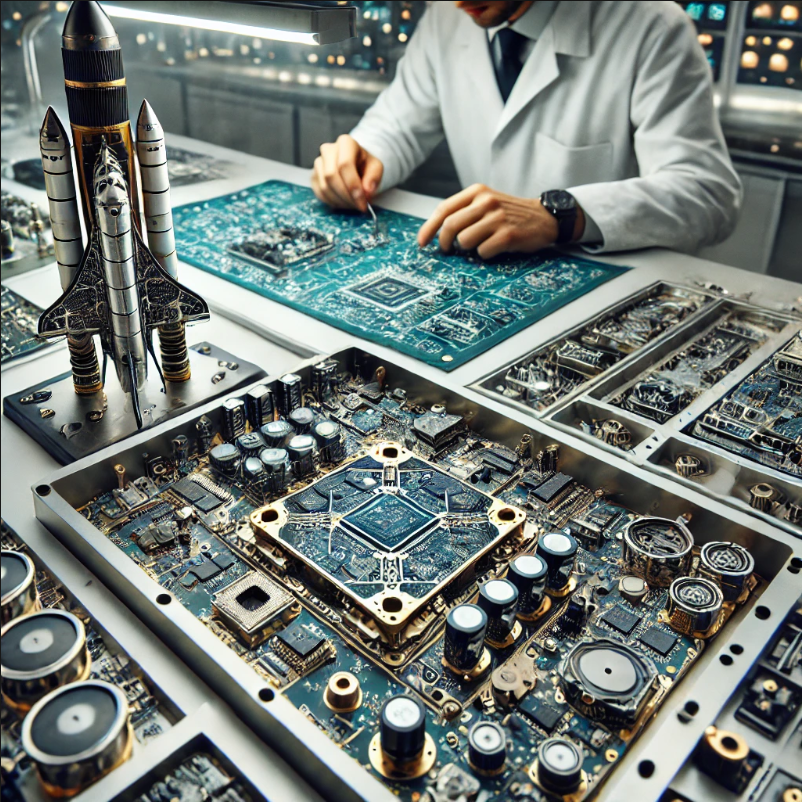Printed circuit boards (PCBs) play a vital role in the aerospace industry. Due to the special characteristics of aerospace equipment, PCBs are subject to extremely high requirements.

High-Reliability Requirements
Aerospace equipment faces extreme environmental conditions during operation, such as high altitude, low temperature, high temperature, strong vibration, and so on. Therefore, PCBs must have high reliability to ensure the normal operation of the equipment. To meet this requirement, aerospace PCBs are usually made of high-quality materials. Such as high-performance epoxy resin, glass fiber, etc., with good insulation performance, mechanical strength, and heat resistance. During the production process, every step is strictly controlled to ensure that the quality of PCBs is stable and reliable. For example, with the use of strict quality testing standards, the PCB’s electrical properties, mechanical properties, heat resistance, and other comprehensive testing, only products that meet the standards can be put into use.
Complex circuit design
Aerospace equipment usually needs to realize complex functions, so the circuit design of PCB is also very complex. To meet this requirement, aerospace PCBs are usually designed as multilayer boards. Different circuits are laminated together and connected through vias to realize complex circuit functions. To improve the performance and reliability of the circuit, some special design techniques are also used. For example, impedance control, and signal integrity design. PCBs for aerospace applications also need to consider electromagnetic compatibility (EMC) issues to avoid interference between different circuits and to ensure the normal operation of the equipment.
High Temperature and Radiation Resistance
In the aerospace field, equipment may face high temperatures and radiation environments. Therefore, PCBs must have the ability to withstand high temperatures and radiation. To meet this requirement, aerospace PCBs usually use special materials and processes. For example, high-temperature resistant materials, such as polyimide, are used to maintain good performance in high-temperature environments. Some special protective measures are also used. Such as coating, shielding, etc., to improve the radiation resistance of the PCB. In the design process, will also consider the heat dissipation problem, through a reasonable layout and heat dissipation design, to ensure that the PCB can work properly in a high-temperature environment.
In short
PCB applications in aerospace equipment are characterized by high-reliability requirements, complex circuit design, high-temperature resistance, and radiation resistance. In order to meet these requirements, it is necessary to use high-quality materials, advanced design techniques, and strict production processes to ensure the quality and performance of PCBs are stable and reliable.a
